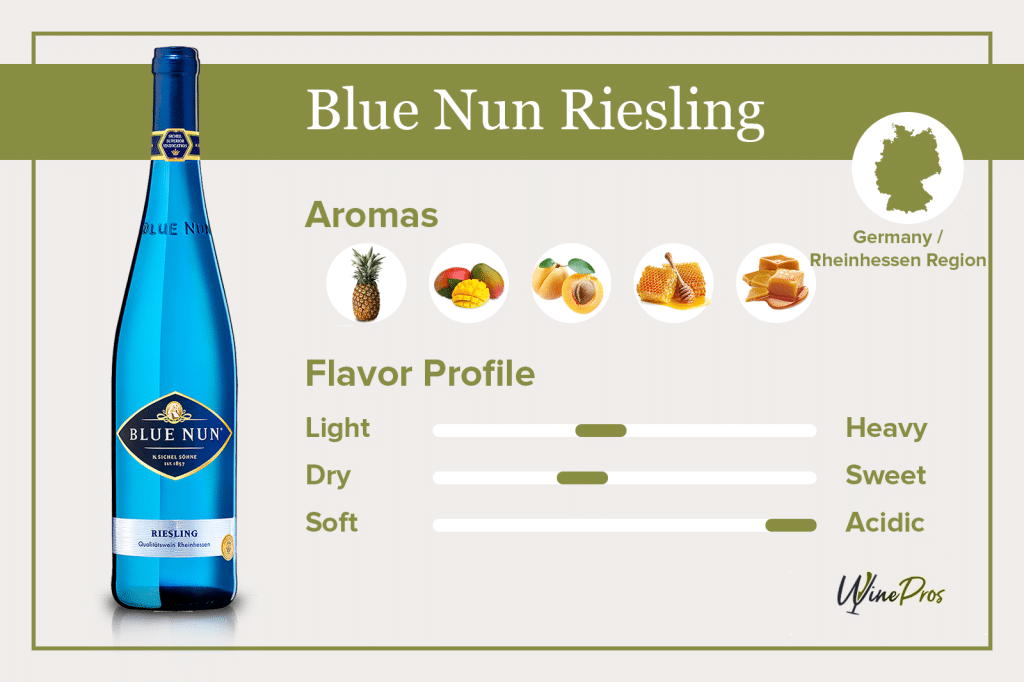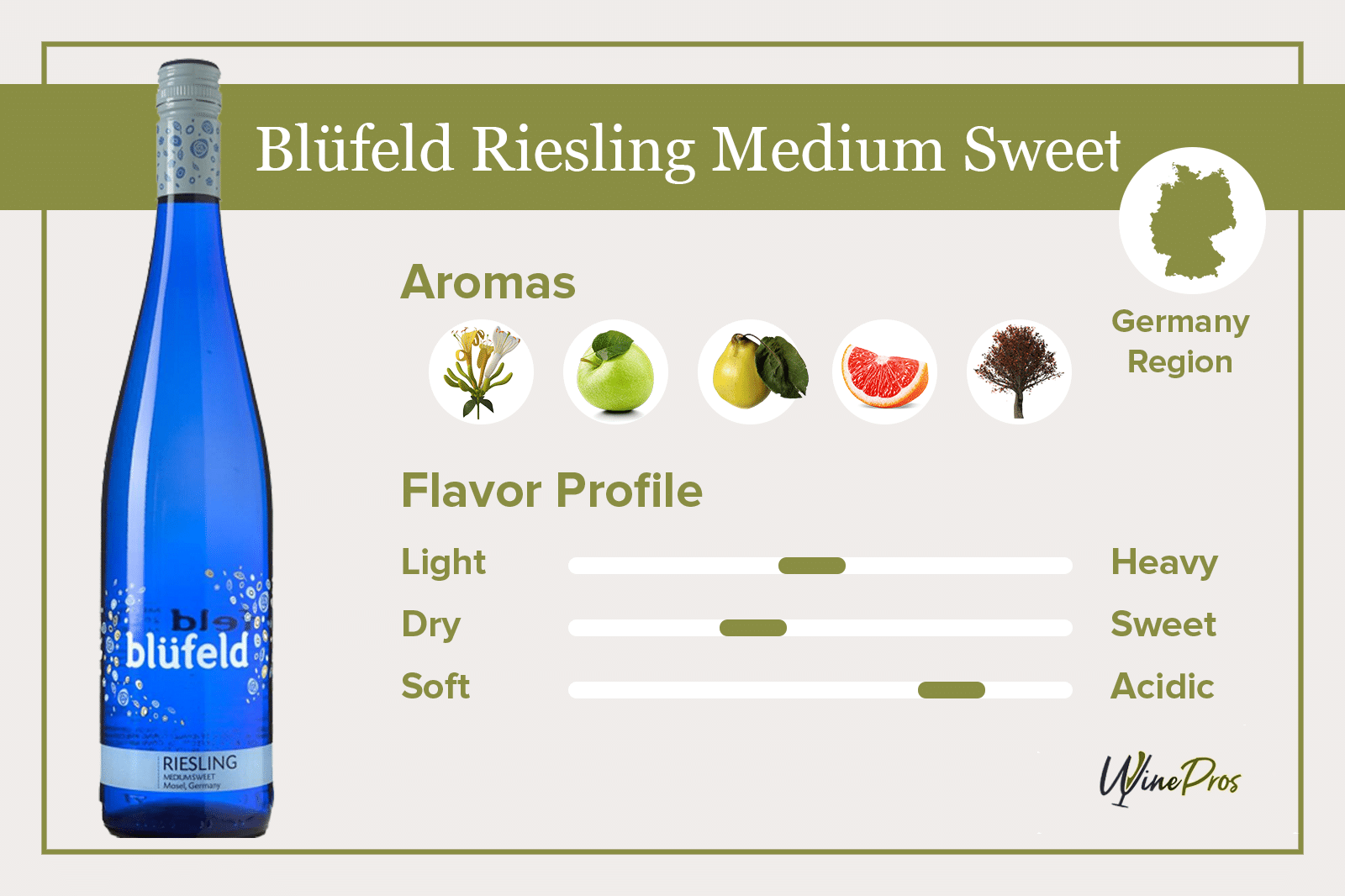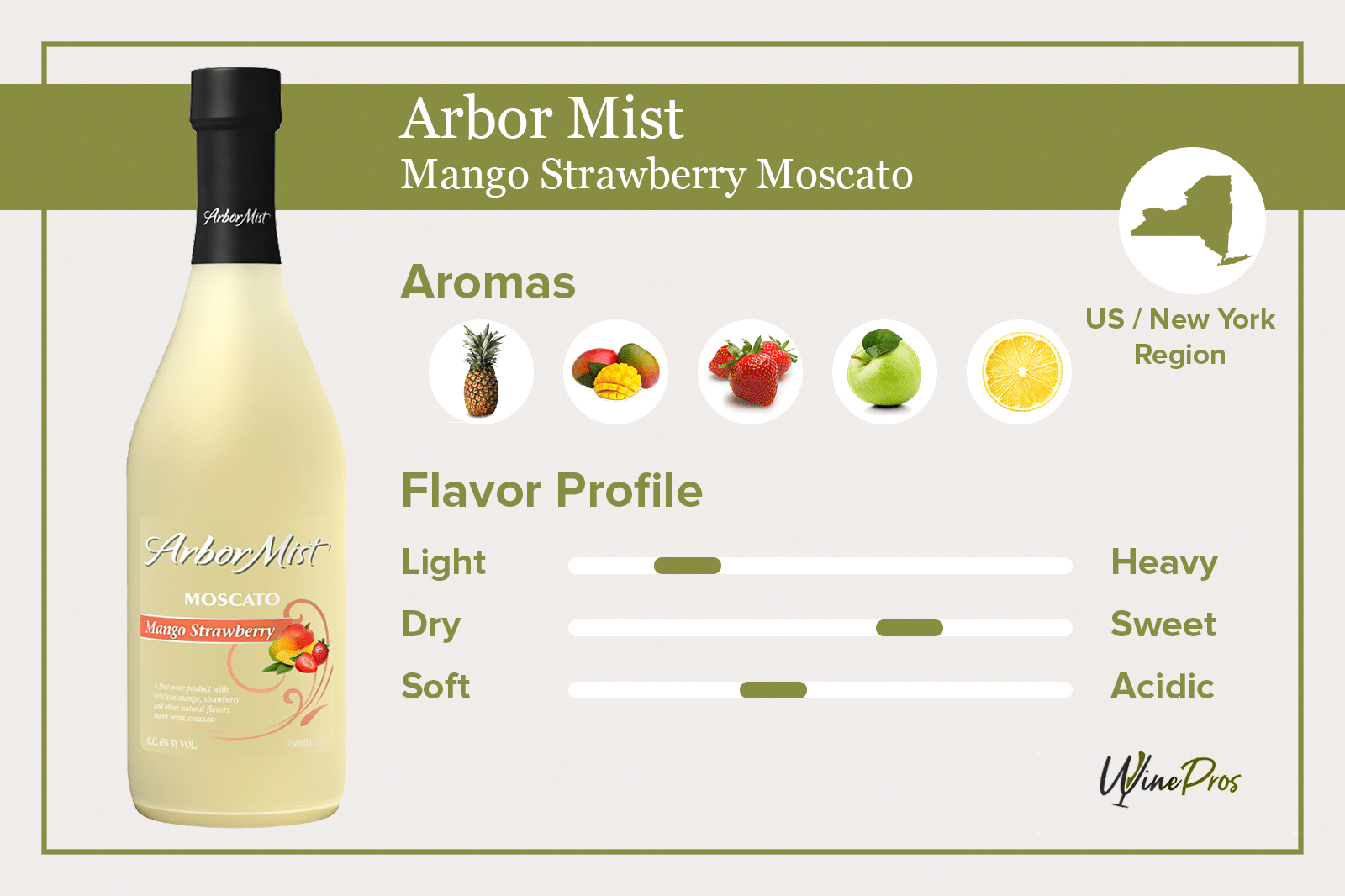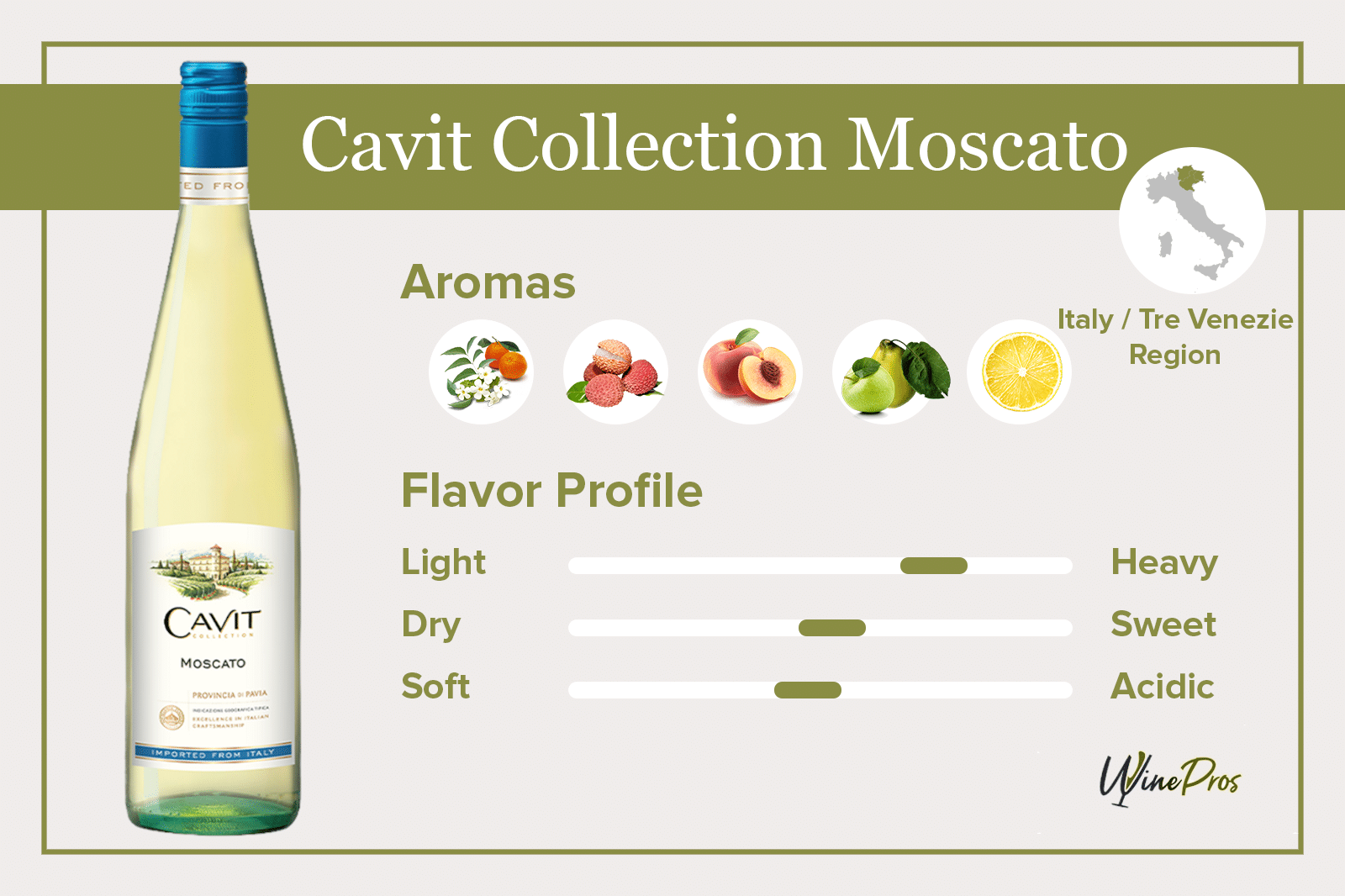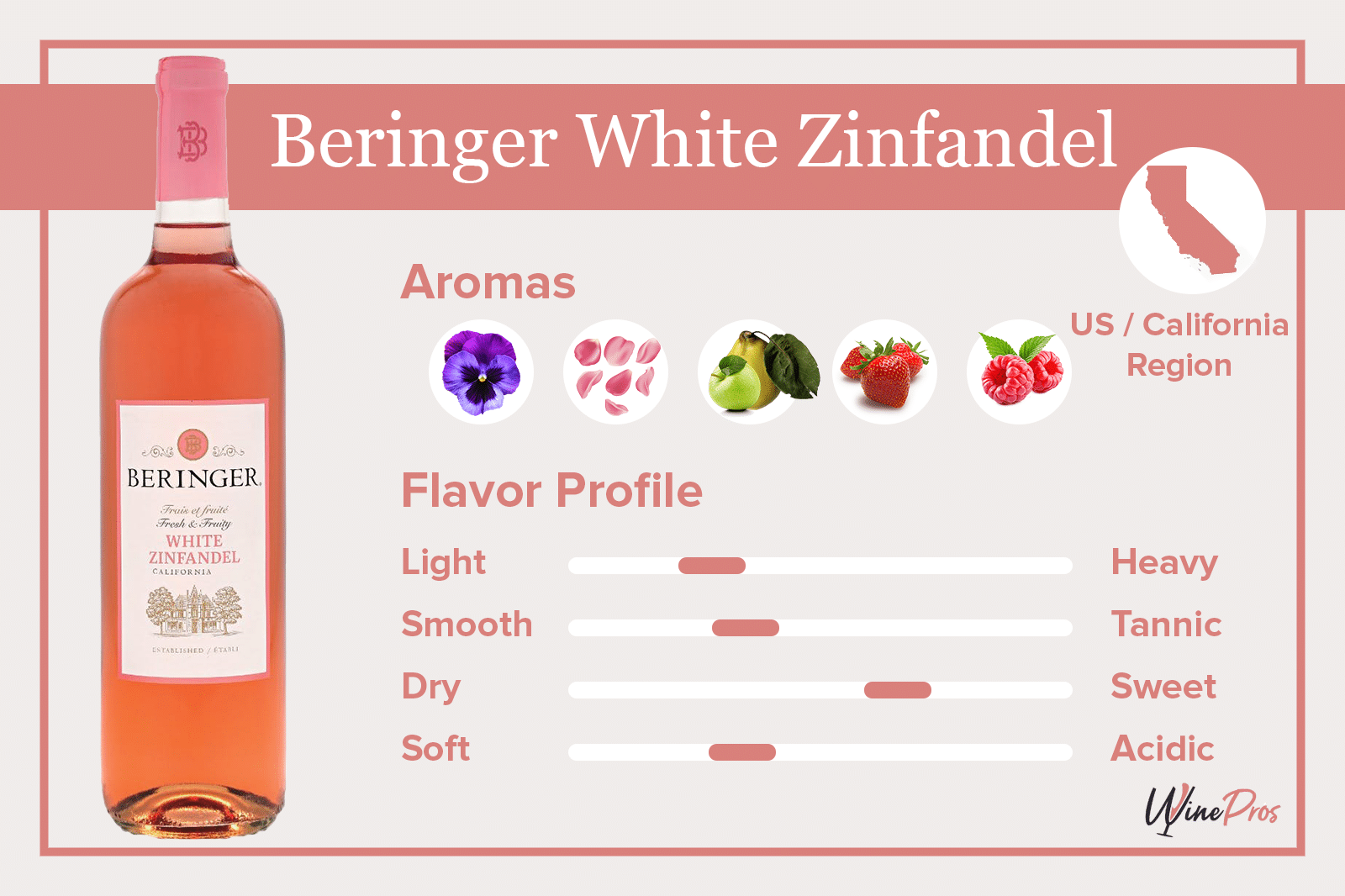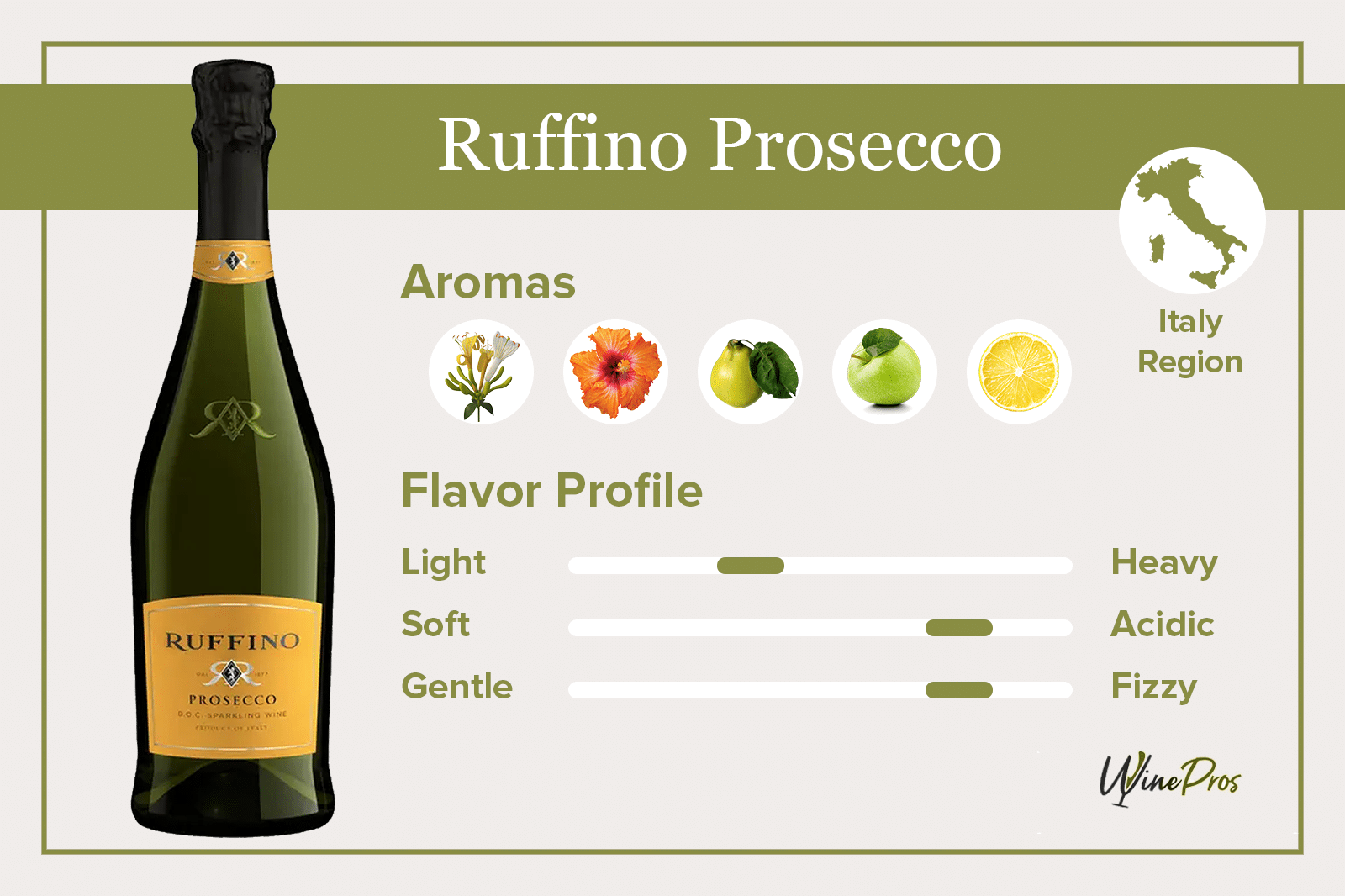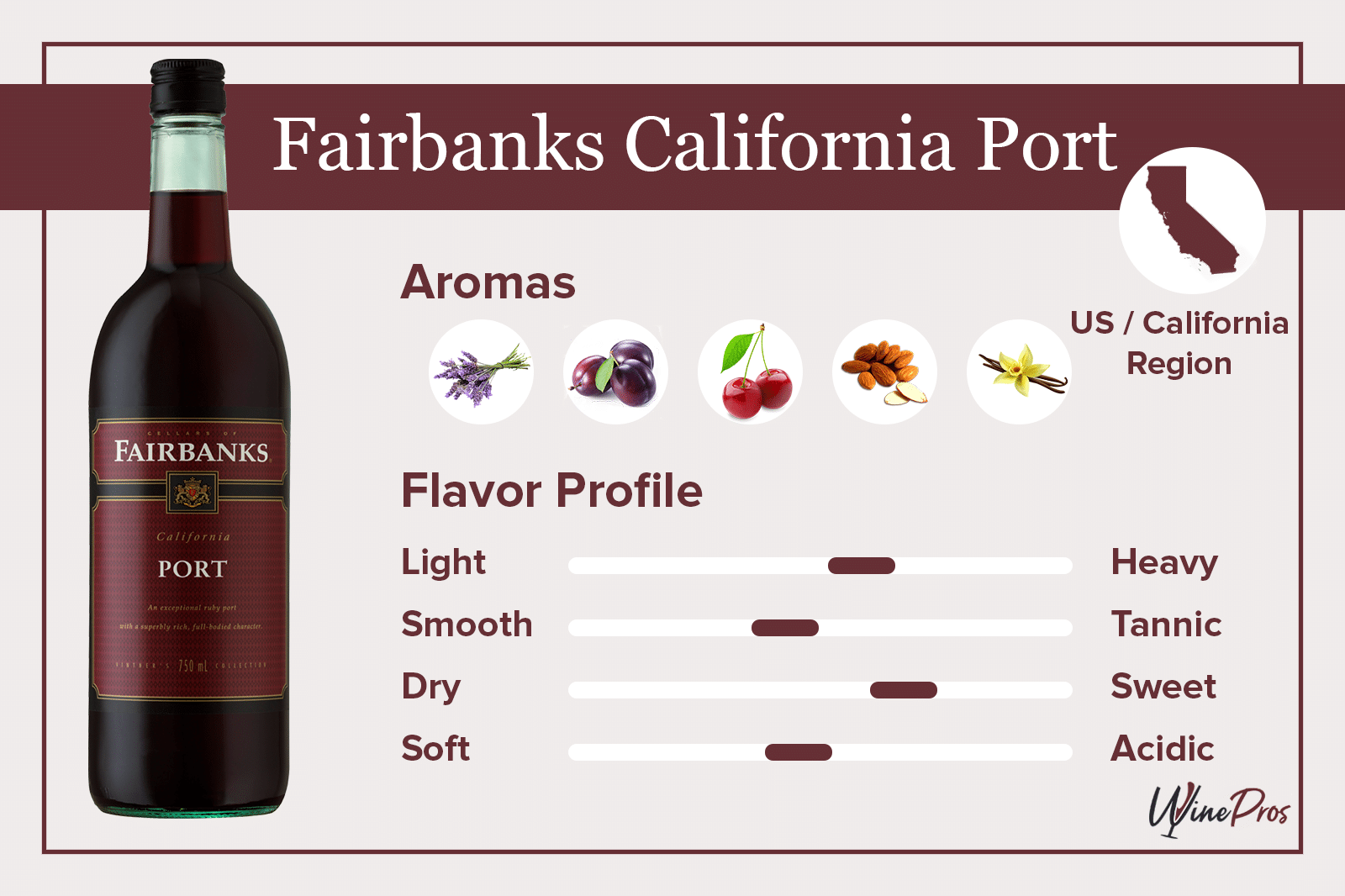What Kind of Wine Is Blue Nun Riesling?
Blue Nun Riesling is a German semi-sweet white wine. It is from one-hundred percent Riesling grapes from Rheinhessen. With a floral bouquet filled with notes of green and citrus fruits, the wine marks its way to the luscious palate. The refreshing acidity, further, drives to the long finish. Germany produces the highest concentration of fantastic Rieslings. Whether dry and steely, medium-sweet and floral, or lusciously sweet, German winemakers are undeniable masters of this varietal.
The Riesling grape is native to the Rhine region of Germany. The vines grow across the banks of the Mosel River on steep, south-facing hills, receiving excellent sun exposure. In Mosel, the climate is cool with wet summers and low rainfall during the final stage of grape ripening, just before harvest. This cool ripening period is great because it helps the grapes to concentrate their sugar and preserve their vibrant acidity.
Blue Nun Riesling Review
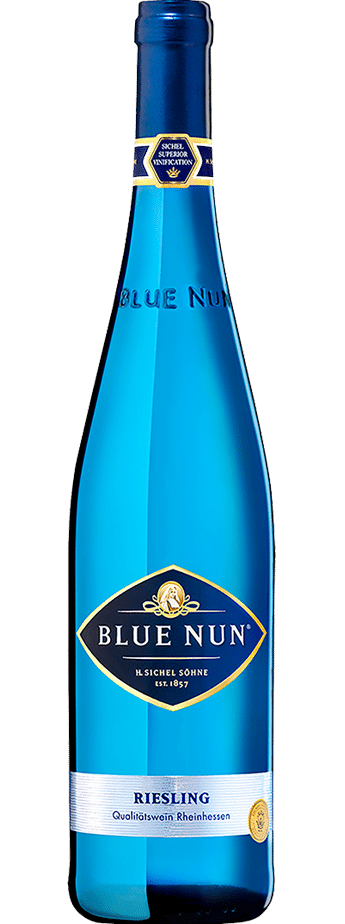
- Winery — Blue Nun
- Country/Region — Germany, Rheinhessen
- Type — German Riesling
- Aroma — Honeysuckle, Elderflower, Apple, Pear, Lemon, Lime Zest
- Grapes — Riesling
- Taste — Pineapple, Mango, Peach, Honey, Caramel, Petrol, Raisin
- Alcohol Content — 10%
- Sugar — Semi-Sweet
- Pairing — Roast Chicken, Light Stews, Salmon, Tuna, Japanese
With a characteristic sweetness and fruity acidity, Blue Nun Riesling is hard to pass by. Instead, it is a German Riesling that every wine fan should try at least once. Cultivated in the Rhine, the wine embraces the structural characteristics and noble origin of its varietal. Its crispiness and ripeness are out-of-this-world as they stand in perfect balance. People, just go for it!
Tasting Notes
Blue Nun Riesling has an elegant nose and a luscious mouth, on top of that, it’s an easy-going wine. As spring flowers blend with apple and citrus, they create an aromatic bouquet. In the mouth, endless exotics together with stone fruit flavors mingle with honey and caramel. The tasting profile forward is driven forward by the vibrant acidity that invigorates even more.
Appearance
With a pale straw-gold color that resembles fine mounted jewelry, Blue Nun Riesling wine has a pleasing appearance. The center is almost as transparent as water, while the legs are long and add finesse. A few swirls later, a vivid lemon tone starts to appear near the rim, ensuring that wine fans never get bored.
Aroma
Blue Nun Riesling has a sweet-smelling bouquet. Fragrances of honeysuckle and elderflower emerge as the bottling uncorks, accompanied by green and citrus fruits. Apple, pear, and lemon aromas take over after the floral scents, while a hint of lime zest appears too. As such, Blue Nun Riesling has a delicate aromatic profile that is ‘as fresh as a daisy’!
Taste
Sweet and honeyed on the palate, Blue Nun Riesling is savory and balanced. The wine shows an abundance of exotic and stone fruit flavors, as a good Riesling, should. Ripe pineapple and mango combine with peach to dominate the mouth. In addition, caramel notes touch the taste buds gently as petrol and raisin overtones round the mouthfeel. A lively acidity offsets the sweetness and invigorates.
Finish
Blue Nun Riesling concludes the tasting profile with a long and buttery finish. It contributes structure and complexity to the wine’s body as a fruity sensation lingers. A slight effervescence emerges as the glass is on the table, which is immensely welcoming. What a wonderful ending to this delicious Riesling!
Rating
Blue Nun Riesling displays quality, and the wine-making efforts of the producer are praiseworthy. Despite having a light sulfur aroma, the wine has lots of fresh apple-scented fruit, accompanied by exotic fruits and honey sensations. To sum it up, it is compelling and palatable. As a consequence, wine enthusiasts find a reason to smile in every sip. For a German Riesling that delivers more than expected, Blue Nun Riesling is incomparable!
Blue Nun Riesling Food Pairing
Blue Nun Riesling is versatile and combines well with many cuisines and dishes. It makes a fantastic combination with roast chicken and vegetables on the side. Oily fish like tuna or salmon make a delightful combination with the wine too. Grill salmon on the barbecue, or prepare some yummy tuna rolls and have a glass of Blue Nun Riesling. The savoriness will blow your mind. Light stew recipes are also a great match, such as beef stew and dumplings or a chicken and lentil stew with gremolata.
Frequently Asked Questions
Who Makes Blue Nun Riesling?
Blue Nun Riesling is a product of Blue Nun and F. W. Langguth, located in Mosel, Germany. Founded in 1857, when Hermann Sichel established his wine business in Mainz, Blue Nun was born during the 1921 vintage. In 1950, Blue Nun became the “Unofficial Ambassador of Germany”. During the 1970s, Blue Nun reached new heights of popularity, and in 1985 the annual sales reached 1.25 million cases in the United States and 750,000 cases sold around the world.
The 90s was a significant decade in the history of Blue Nun. In 1992, the winery was acquired by family-owned winery F. W. Langguth. Five years later, in 1997, the iconic blue bottle was introduced, and at the turn of the millennium, Blue Nun was the best distributed German wine on the planet. Finally, in 2011 Blue Nun relaunched internationally with additional grape varietals and a more sophisticated label design.
How Is Blue Nun Riesling Made?
Harvested based on their optimal taste and ripeness, the Riesling grapes are de-stemmed, crushed, and pressed to produce a thick liquid called “must” or juice. Then, this juice is placed in stainless steel tanks to undergo cold fermentation. In this way, the wine maintains its inherent acidity and achieves a perfect balance that is refreshingly crisp. When fermentation is over, the wine is removed from the vessels and filtered from yeasts which have fallen to the bottom of the tank. Finally, Blue Nun Riesling is bottled.
Where Is Blue Nun Riesling Made?
Blue Nun Riesling originates in Rheinhessen (Rhine), Germany. It is the largest wine-growing region in the country. A broad range of black and white grape varieties are grown here. Muller-Thurgau and Riesling are the two most planted varieties of either color. The black grapes are Dornfelder, Portugieser, Spatburgunder, and Silvaner.
Rheinhessen’s reputation is centered around the village of Nierstien on steeply sloping vineyards on the west bank of the Rhine. This area produces some of the fullest-bodied Rieslings in Germany and the world. In more recent years, grape growers working in areas without a long-standing reputation for wine production have started to craft top-quality wines. As a consequence, Rheinhessen has gained a reputation for innovation.
How to Serve Blue Nun Riesling?
Blue Nun Riesling is served best well-chilled at forty-three to forty-five degrees Fahrenheit (six to eight degrees Celsius). An hour before serving, take the bottle, wrap it in a wet paper towel, and place it inside the fridge. Afterwards, uncork it and serve in standard-sized white wine glasses. The large surface of the glass provides aeration to the wine. As it comes into contact with the wine surface, the air helps the aromatic and flavor intensity elevate. By doing so, Blue Nun Riesling showcases its green and sweet exotic fruit personality in all of its crispy glory.
To ensure that the wine remains cool, put it in an ice bucket or wine cooler. The bucket should be filled three-quarters full with equal quantities of ice and water so that iced water surrounds the bottle. The water is then able to transfer the heat from the bottle to melt the ice. Air acts as an insulator, and the bottle chills. Beware, though, that over-chilling can overshadow the flavors in wines.
How Much Does Blue Nun Riesling Cost?
Blue Nun Riesling does not have one set price. That said, the wine is affordable and accessible to all consumers. Blue Nun Riesling prices range from $10 to $12, depending on the vendor. As such, it can be bought without tremendous cost considerations. Considering the tradition this German Riesling carries, it would be a missed opportunity if consumers did not rush to buy it. I mean, how many Rieslings span over a centennial and are marketed at such a low price? Just buy it!
How Long Does Blue Nun Riesling Last?
Blue Nun is a semi-sweet Riesling, and consequently, it might be suitable for bottle aging. In reality, Riesling is one of the most long-lived white wines. It is renowned for its ability to mature for decades in the bottle and yet taste surprisingly fresh. When aged, Rieslings develop flavors of honey and toast and retain their refreshing acid nature.
Blue Nun Riesling should be sealed with a cork and stored in a stable environment. Room temperatures of fifty to sixty degrees Fahrenheit (ten to fifteen degrees Celsius) are ideal together with a degree of humidity. Direct sunlight or artificial light are not beneficial as they harm the wine by messing around with its enzymes, responsible for maturation. The environment should be odor-free as odors find their way inside the bottle and affect the wine’s quality by giving it unpleasant flavors. Blue Nun Riesling could age for up to three or more years without losing much of its fruitiness and acidity.
How Many Calories Does Blue Nun Riesling Have?
Blue Nun Riesling has a high-calorie density. There are about 25 calories in 1 fluid ounce of the wine and approximately 185 per serving. The calorie breakdown is 0 grams of fat, 0 grams of sodium, 0g grams of total carbohydrate, 0 grams of protein, and around 40 grams of total sugars. Consequently, Blue Nun Riesling calories need consideration as they may bother consumers on a diet. The reason for this is that the number of total sugars in sweet Rieslings is usually very high. Blue Nun Riesling alcohol content is 10% per 750ml bottle, a regular alcoholic concentration for semi-sweet white wines.
Conclusion
With a characteristic sweetness and fruity acidity, Blue Nun Riesling is hard to pass by. Instead, it is a German Riesling that every wine fan should try at least once. Cultivated in the Rhine, the wine embraces the structural characteristics and noble origin of its varietal. Its crispiness and ripeness are out-of-this-world as they stand in perfect balance. People, just go for it!

